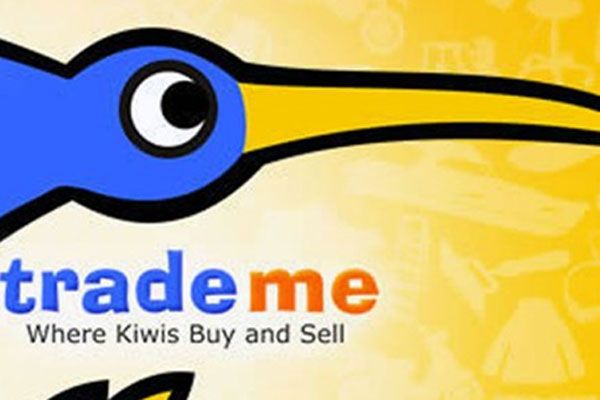Published on the 01/08/2002 | Written by Keith Newman

The TradeMe web site is experiencing month on month growth as buyers and sellers let the market decide the best price for cellphones, antiques, clothing and computer parts and the auction technology behind the scenes attracts attention from other players…
TradeMe was launched in March 1999 as a classified site like e-Bay but specialising in computer parts and systems. It branched out to cater to a thriving antiques market and soon cellphones and clothing had become highly popular items.
When you visit it feels like something’s happening all the time. If you hit the browse tab it tells you how many items are listed in each category. The clock is ticking down on items for sale. The flags are up when the have reached their reserve and it’s clear there’s a critical mass of users making life interesting for buyers and sellers alike. “If buyers can’t find what they need this month the chances are it’ll be there next month so they keep coming back. There are also more sellers each month and so they come back with more items,” says Trade Me general manager Nigel Stanford.
When iStart visited the TradeMe site we were the 120,714th member to sign up. According to Mr Stanford the auction site has an average of 176,000 visitor and about 90,000 of those are regular users. “On any day we’re averaging about 1200 people selling up to 7000 new items with probably 2-3000 people bidding.” Over $15 million worth of goods have been sold through the site so far.
TradeMe has in fact become a veritable portal using its technology to host the SafeTrader escrow service, ‘a trusted third party’ releasing money from larger sales to the seller of goods once the auction process has been completed. It also hosts its own Flathunt flat mates site informing those seeking accommodation when suitable places become available and there’s also a OldFriends school re-union web and the Findsomeone dating site which the company has a major shareholding in.
The TradeMe ‘network’ allows the company to cross sell across its various sites promoting the auction business for example to users of the school re-union, dating or flatmates services. The cross-sell also works with TradeMe stores which to date are populated by Air New Zealand and computer vendor Dell who have links to their sites appearing as advertisements across all other sites.
The auction technology originally designed by company founder Sam Morgan and run from his lounge is now continually being upgraded by a team of eight developers with new uses being discovered every month. Ecentric, bought into Trade Me about year after it was launched, although Mr Morgan remains the biggest single shareholder.
The homegrown auction technology behind the site is also finding a niche as portal partners and niche users re-purpose it for their own use.
TradeMe’s parent company Ecentric (www.ecentric.co.nz) recently built an application for the Soccer World Cup as part of a promotion with Adidas and advertising agency Saatchi & Saatchi. The site was available in six languages and a ‘couple of hundred thousand’ people could win points through an on-line game and could use those to bid for the referees boots or David Beckham’s shirt for example.
Now the software that powers TradeMe is being geared up for a fundraising auction for Team New Zealand. Bailey’s Real Estate approached the company to set up a storefront on TradeMe and in conjunction with Xtra will attempt to raise a million dollars for the Americas Cup holders by selling off 33,000 items valued at over $300. The auction will be held in September.
The company also sends out a newsletter to everyone who’s signed on as a member and while there’s a 5 per cent spike on the day it goes out the main reason for growth is word of mouth. “There’s a hard core group people who are addicts and check it every day but the average person might visit every second week or only come when they’re looking for a specific item for example to save $200 on a new cellphone. It’s been a steady growth curve,” he says.
“If you place an advertisement in a newspaper and get 10 offers you will most likely take the first one because you simply want the money but with Trade me we handle all of that in a way that allows you to get the best market value,” says Mr Stanford.
“If you are a seller and your item is worth more than you thought you’ll get that. Conversely if you have over estimated the market will tell you that too because you won’t sell it.”
Mr Stanford says Trade Me has tried to avoid being too flashy. “We’re not too hung up on graphic design and making things look flashy. We make easy to use web sites. We don’t let the graphics side get in front of the actual usability.”
Two years ago the company wasn’t charging users for the goods sold at auction then in September 2000 they decided to opt for a percentage of each sale and it hasn’t looked back since. Typically less than five per cent of the sale price is charged.
“Rather than paying an up front fee it’s much more acceptable to pay a portion of the income you’re receiving from a sale. People want to sell things and they’re happy to pay a percentage once they do. We also have classifieds, which people must pay for. I recently put a wanted advert on the site looking for a copy of a specific kind of Windows and got 10 replies. I was impressed,” says Mr Stanford.



























